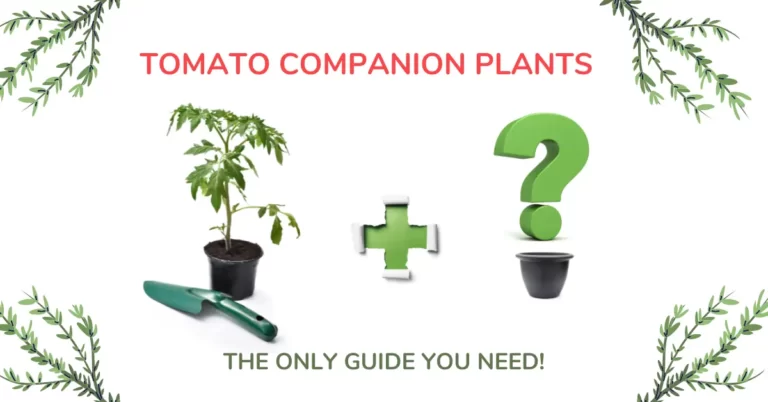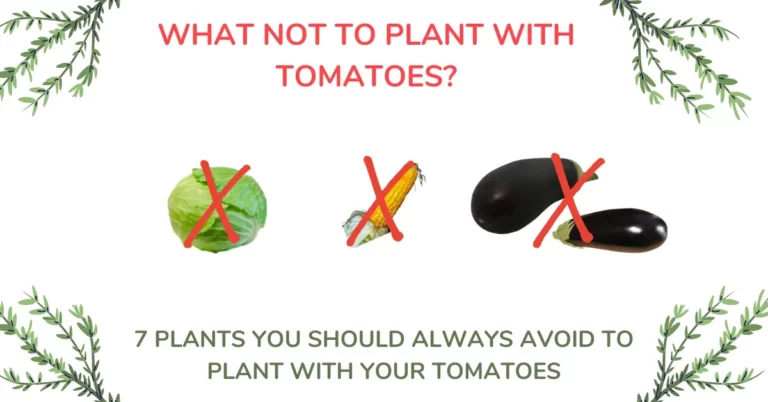There’s no denying that homegrown tomatoes taste nothing like store-bought ones. During the warm season or in a warm climate, that’s easily accomplished all year around.
However, when it comes to cold climate countries and areas, that is not that easy. If you want to extend the life of tomato yield but you also live in a country with harsh winter, it’s expected to even ask yourself – can you grow tomatoes in the winter?
While the short answer is “no” for most cold places, there is always a workaround to that cold problem. ❄️ ☃️
Can You Grow Tomatoes in Winter?
In the conventional outdoorsy/garden/raised bed way – No. That’s the straightforward answer. Tomatoes are warm-season plants and are typically not grown during the winter in most regions.
This is because tomatoes require a long period of warm weather to properly grow and ripen. In areas with cold winters, it is often not possible to grow tomatoes outdoors during the winter months.
However, it is possible to grow tomatoes during the winter.
The 3 most common ways to accomplish this task are:
1) Growing tomatoes indoors
2) Growing tomatoes in a greenhouse
3) Using cold-resistant tomato varieties
Let’s take a look at each of these options in more detail.
Growing Tomatoes Indoors During Winter
The main negative side of growing tomatoes inside is the fact that it requires space. If you’re one of those lucky people with no indoor space issues, that’s an excellent way to grow delicious tomatoes.
The main benefit is that you eliminate most pest and disease problems that can potentially harm your tomatoes.

Growing tomatoes indoors during the winter can be a rewarding and enjoyable experience. With careful planning, you can enjoy fresh produce throughout the year, regardless of seasonal weather conditions. Here is a beginner’s guide to growing tomatoes indoors during the winter:
1. Choose the right variety of tomatoes
Not all varieties of tomatoes are suitable for growing indoors. Look for varieties that are smaller and more compact, as these will be easier to grow in a small space. Some good options include cherry tomatoes, grape tomatoes, and small heirloom varieties.
2. Provide plenty of light
Tomatoes need plenty of light to grow and produce fruit. If you are growing your plants indoors, provide them with at least six hours of direct sunlight each day. You can also supplement natural sunlight with grow lights if necessary.
3. Use a high-quality soil mix
To grow healthy tomatoes, you need to provide them with a well-draining, nutrient-rich soil mix. Look for a mix specifically designed for tomatoes, or create your own by mixing equal parts potting soil, compost, perlite, or vermiculite.
4. Water regularly
Tomatoes need consistent moisture to grow and produce fruit. Water your plants deeply and regularly, making sure to avoid getting the leaves wet. This will help prevent fungal diseases and keep your plants healthy.
5. Prune and stake your plants
As your tomato plants grow, you will need to prune and stake them to keep them healthy and support their growth. Prune off any suckers that grow from the base of the plant, and use stakes or cages to support the plants and keep them upright. You can find those on Amazon or any major gardening store.
6. Monitor for pests and diseases
Even though growing the tomatoes inside removes some of the pest problems, even indoors, tomatoes can be susceptible to some pests and diseases.
Keep an eye out for common problems, such as aphids, whiteflies, and blossom end rot. If you notice any issues, take steps to address them promptly to keep your plants healthy.
Growing Tomatoes in a Greenhouse During Winter
Growing tomatoes in a greenhouse during winter can be an effective way to maximize your crop yield, even when the weather outside is less than ideal. While other crops may struggle with colder temperatures and shorter days, tomatoes are well-suited to greenhouses which allow you to control temperature and humidity levels.

To make the most of growing tomatoes in a greenhouse during winter, all aspects of the environment must be taken into consideration. For example; controlling light intensity by using curtains and double glazing will ensure adequate sunlight for tomato plants while maintaining optimal temperatures inside the greenhouse.
Additionally, choosing an appropriate soil type and adding beneficial nutrients such as compost will help promote healthy growth throughout cold months.
The benefit of growing tomatoes in a greenhouse is the protection from frost and the control of water and fertilization. The ultimate temperature range in the greenhouse should be around 70-80˚F (or 21-26˚C) throughout the day and around 65˚F (or 18˚C) through the night.
In terms of humidity, avoid keeping it above 90%. You might want to invest in some fans to keep the air circulation in the greenhouse going all the time.
Another crucial point – selecting the right tomato variety. It is important to choose tomato varieties that are well-suited to the conditions inside the greenhouse. This may include choosing varieties that are resistant to common greenhouse pests and diseases, as well as varieties that are adapted to the specific climate and growing conditions inside the greenhouse.
Some popular varieties of tomatoes for greenhouse cultivation include “Sungold,” “Big Rainbow,” “Red Cherry,” and “Yellow Pear.”
Growing Special Cold-Resistant Tomatoes During the Winter
Growing tomatoes in the winter is a great way to extend your harvest and get more out of your vegetable garden. With the right strategies, you can easily grow cold-resistant varieties that are well-suited for colder temperatures.
One option is to use row covers or plastic tunnels over tomato plants during periods of extreme cold weather—known as “season extension”—to keep them from freezing.
You can also select hardy varieties such as Arctic Rose, Glacier, or Sub Arctic Plenty which are especially resistant to frost damage and have shorter maturity times so they yield earlier than other tomatoes.
For those without access to traditional season extension methods, there’s even some success with overwintering selected tomato plants indoors!
Common questions for Growing Tomatoes in the Winter
Growing tomatoes in the winter can be a challenging task, but it is not impossible. With proper planning and preparation, you can successfully grow fresh tomatoes even during the coldest months of the year.
To get started on your tomato-growing project this winter, here are some FAQs to help guide you:
Q1: What type of soil should I use?
Answer: A well-draining potting mix or garden soil is best for tomato growth in the winter as it will provide adequate drainage and water retention for your plants. Be sure to add compost or other organic material like manure to give them an extra boost in nutrition!
Q2: How much light does my plant need?
Answer: Tomatoes require at least 6 hours of direct sunlight per day; however, if temperatures drop below 50 degrees Fahrenheit (or 10 degrees Celcius) during nighttime hours then supplemental lighting may be needed. This could include LED lights that emit both blue and red spectrum wavelengths which stimulate better leaf production than regular white light bulbs alone.
Q3: What temperature range should I aim for when growing tomatoes indoors?
Answer: The optimal temperature range lies between 65°F – 80°F (18°C–26°C). If temperatures fall outside of this range too often then they might hinder plant growth significantly so keep an eye on thermometers inside your greenhouses/containers regularly!
Final Thoughts
Winter can seem like a difficult time to grow tomatoes, but with the right knowledge and preparation, it’s totally doable! Whether you’re growing them indoors, in a greenhouse, or selecting cold-resistant varieties – there are plenty of ways to enjoy homegrown tomatoes throughout winter.







